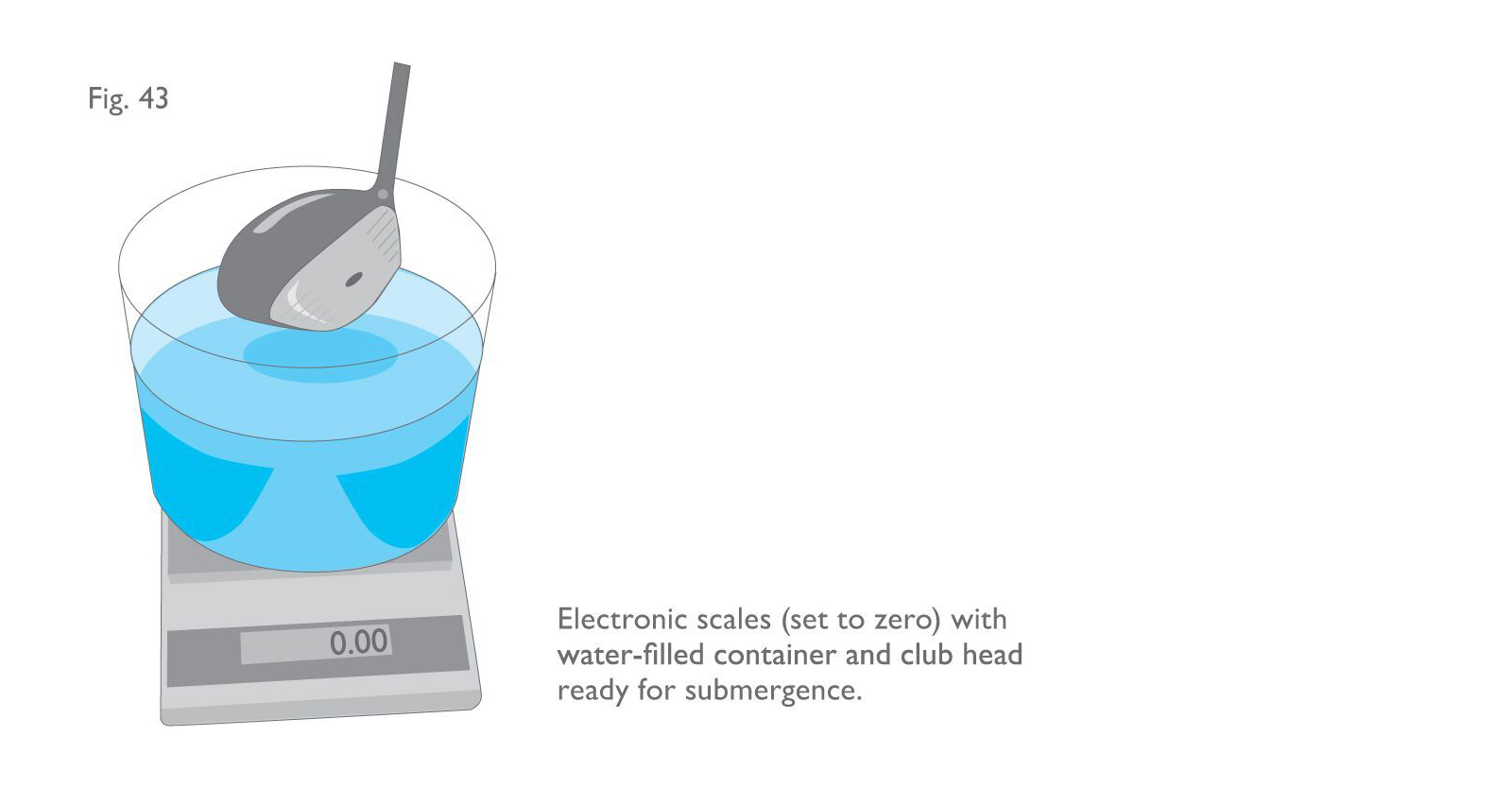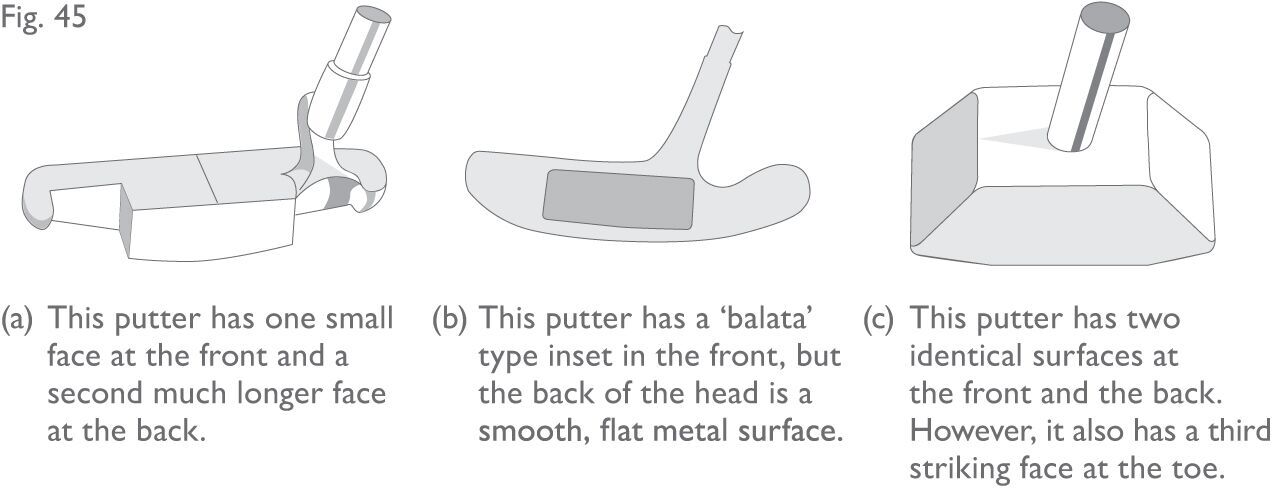Interpretation of Rule 4.a
4.a(1) - Plain in Shape
The “plain in shape” requirement originates from the ‘traditional and customary’ requirement in Section 1a. It is purely a descriptive provision, although in reality it can be challenging to define exactly what a golf club can or should look like. The following sections assists in explaining and illustrating what is and what is not permitted, but it should be noted that the examples that follow are not all-inclusive. Additionally, even if a clubhead satisfies all of the points outlined below, there may still be features or characteristics which render it not generally plain in shape. An overall assessment of the appearance of the head should always be made.
This provision basically means that the design of the clubhead must be free from gimmicks (though putters are viewed more liberally than woods and irons), must have the general appearance of a golf clubhead as opposed to another object and must not incorporate features which are designed to resemble another object (see Figure 23). All parts of the head (including permanent, permissible appendages) must be rigid throughout their length. As a general guideline, “rigid” means that it must not be possible to bend or flex the head or its parts by hand. (see Figure 24).
The provision acknowledges that defining whether a clubhead is “plain in shape” is subjective. To better clarify the provision and its interpretation, it is split into two categories – one which covers “all clubs” and the other which covers the additional specifications relevant only to “irons and woods”. The Section also reflects the more liberalized application for putters which has evolved over the years and provides more detail regarding what is and what is not permitted for iron heads and woodheads.
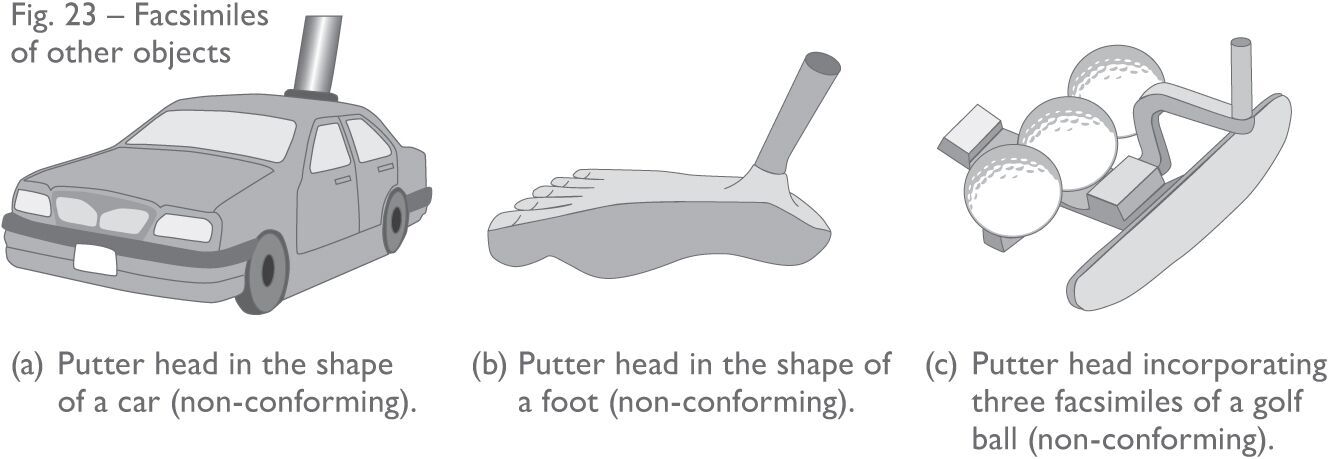

4.a(2) - Holes through the Face
Holes through the face are not permitted – see Figure 25.

4.a(3) - Holes through the Head
-
Holes through the head are not permitted for wood heads – see Figure 26.
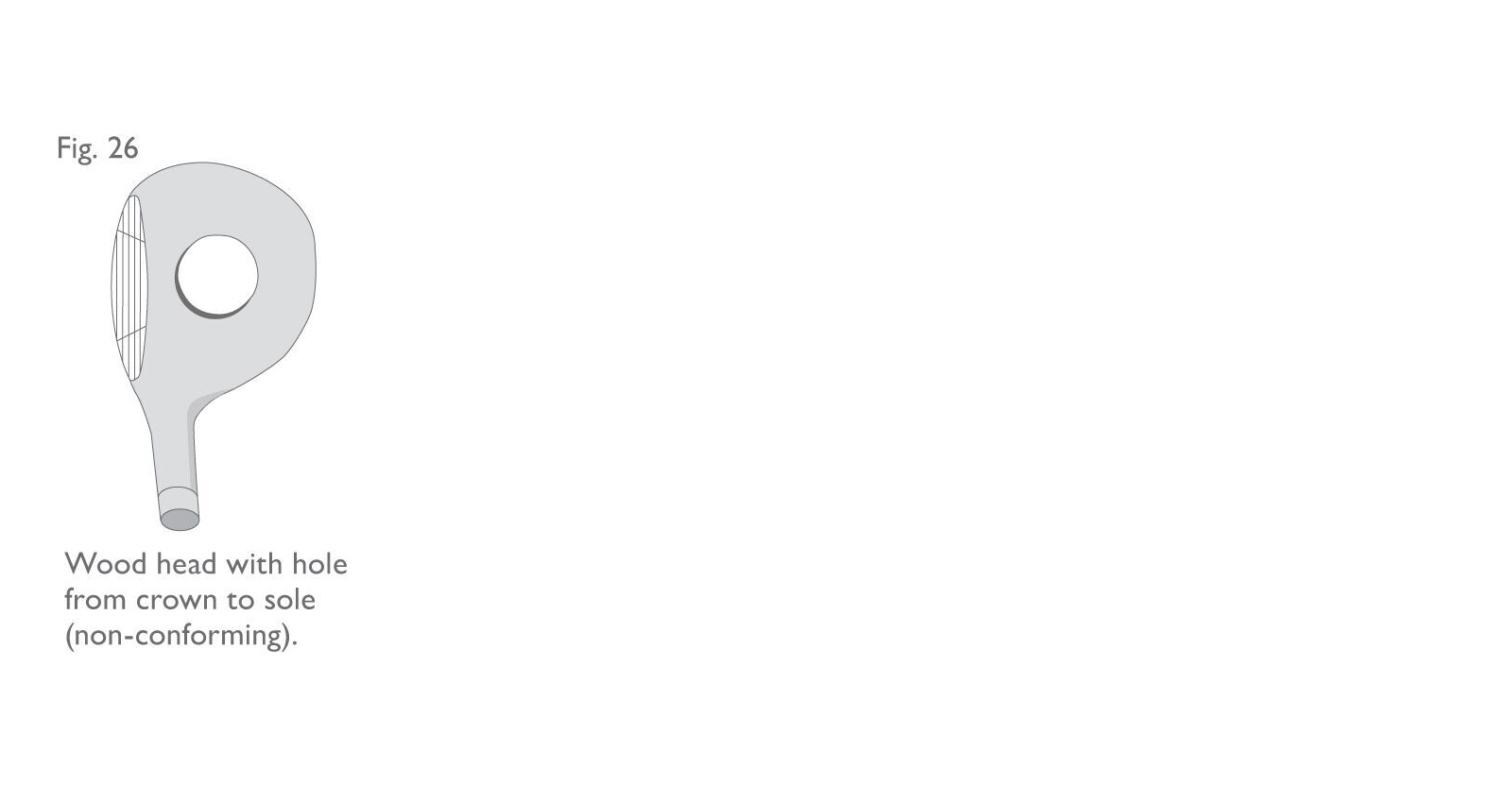
-
Holes through the head are not permitted for iron heads. However, features within the cavity back of an iron clubhead that form a hole or holes may be permitted, (e.g. support bars), provided that the feature is contained within the outline of the main body of the head and the hole cannot be viewed from above – see Figure 27 a/b.
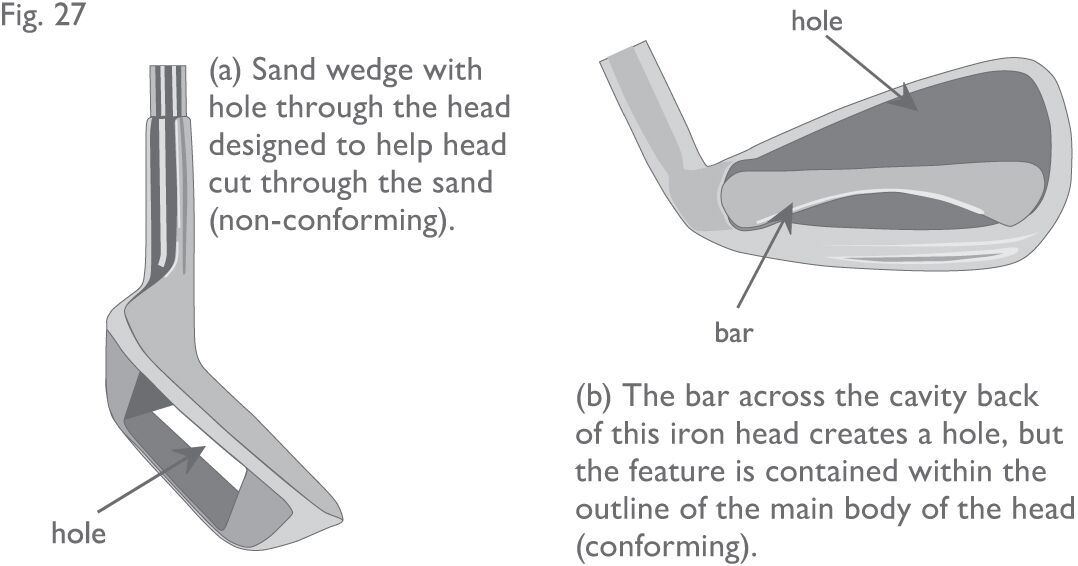
-
This provision is interpreted very liberally for putters and holes through the head (excluding the face) for any purpose including aiming, sighting or alignment are permitted – see Figure 28 for examples of permissible holes through the head of a putter.
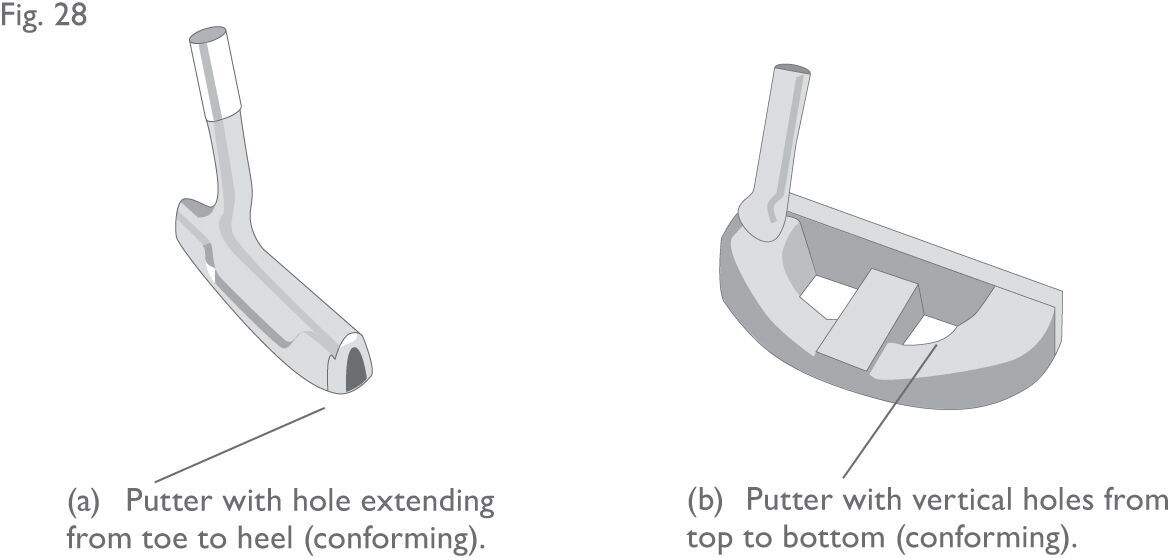
4.a(4) - Features for the purpose of meeting Dimensional Specifications
For all clubs, the distance from the heel to the toe of the clubhead must be greater than the distance from the front to the back (see Section 4b, below). Clubs which incorporate features which are designed to or have the effect of circumventing this requirement are not permitted – see Figure 29.
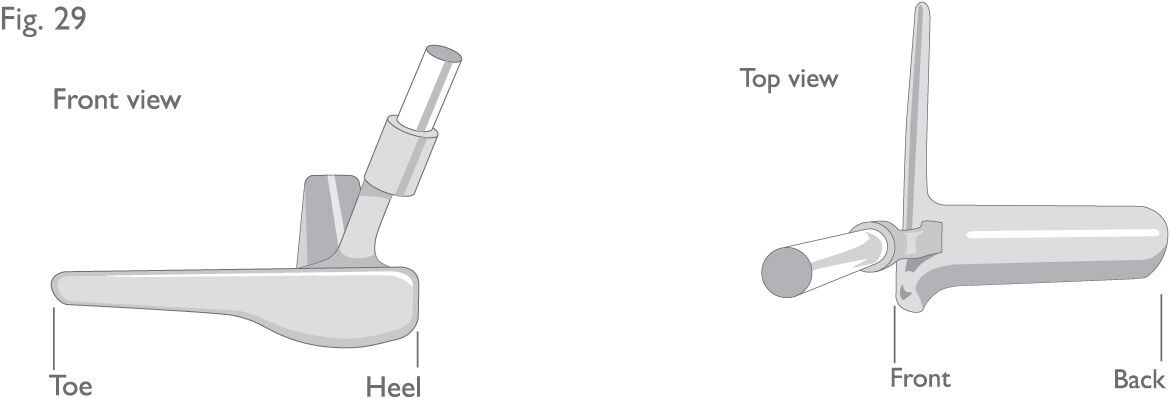
4.a(5) - Features that extend into or ahead of the face
Permitted features in or on the main body of the head must not extend into the face of an iron or wood club. This would include alignment features on the crown – see Figure 30. Alignment lines which have been engraved or inscribed onto an iron clubhead would generally be permitted.
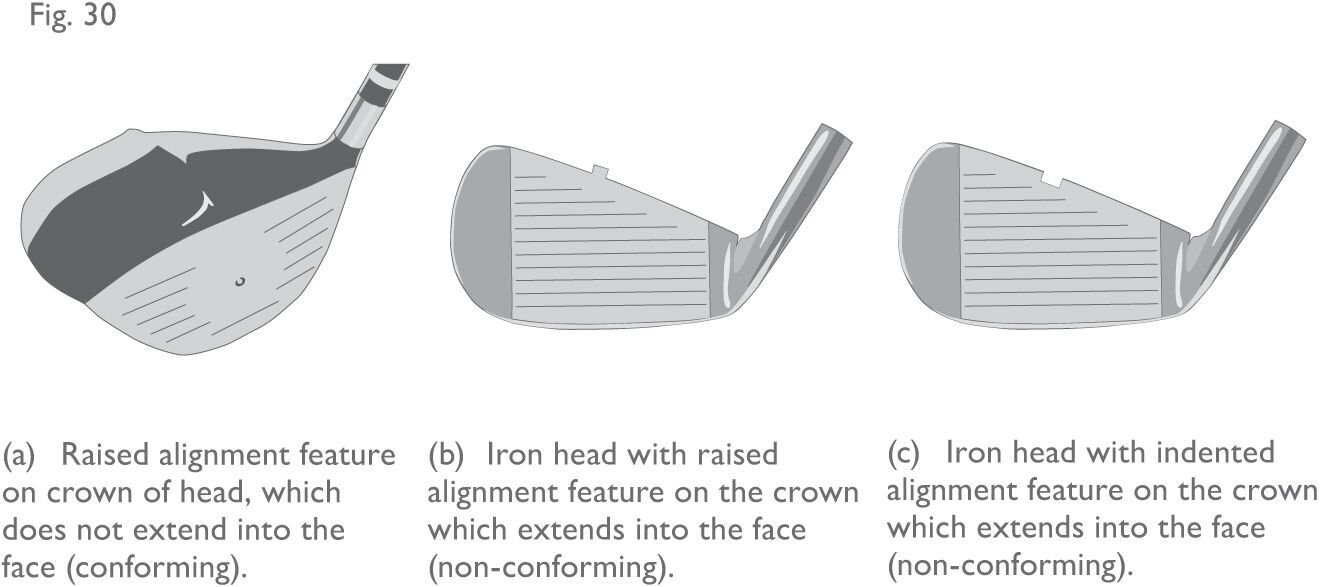
-
Certain features are permitted to extend into the face of a putter, including alignment features and concavities (or furrows) on the crown (see Section below on Furrows and Runners). However, such features must not have a depth or height greater than 0.25 inches (6.35 mm) when measured against the top line of the face.
-
Features of any nature that extend ahead of the face are not permitted on any club – see Figure 31.
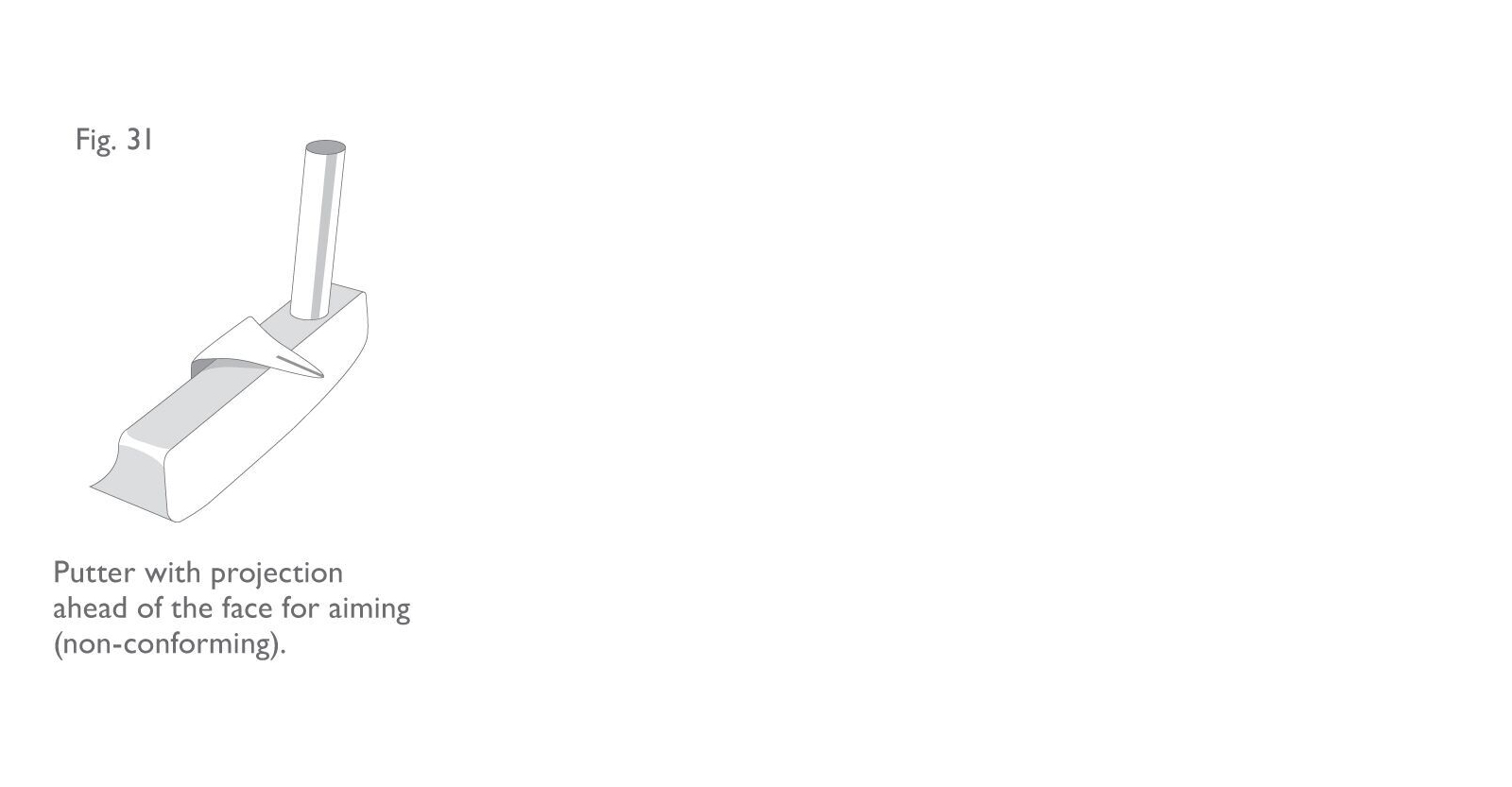
4.a(6) - Features above the top line of the head
-
For putters, alignment or other features must not extend above the top line of the face by more than 0.25 inches (6.35 mm) – see Figure 32.
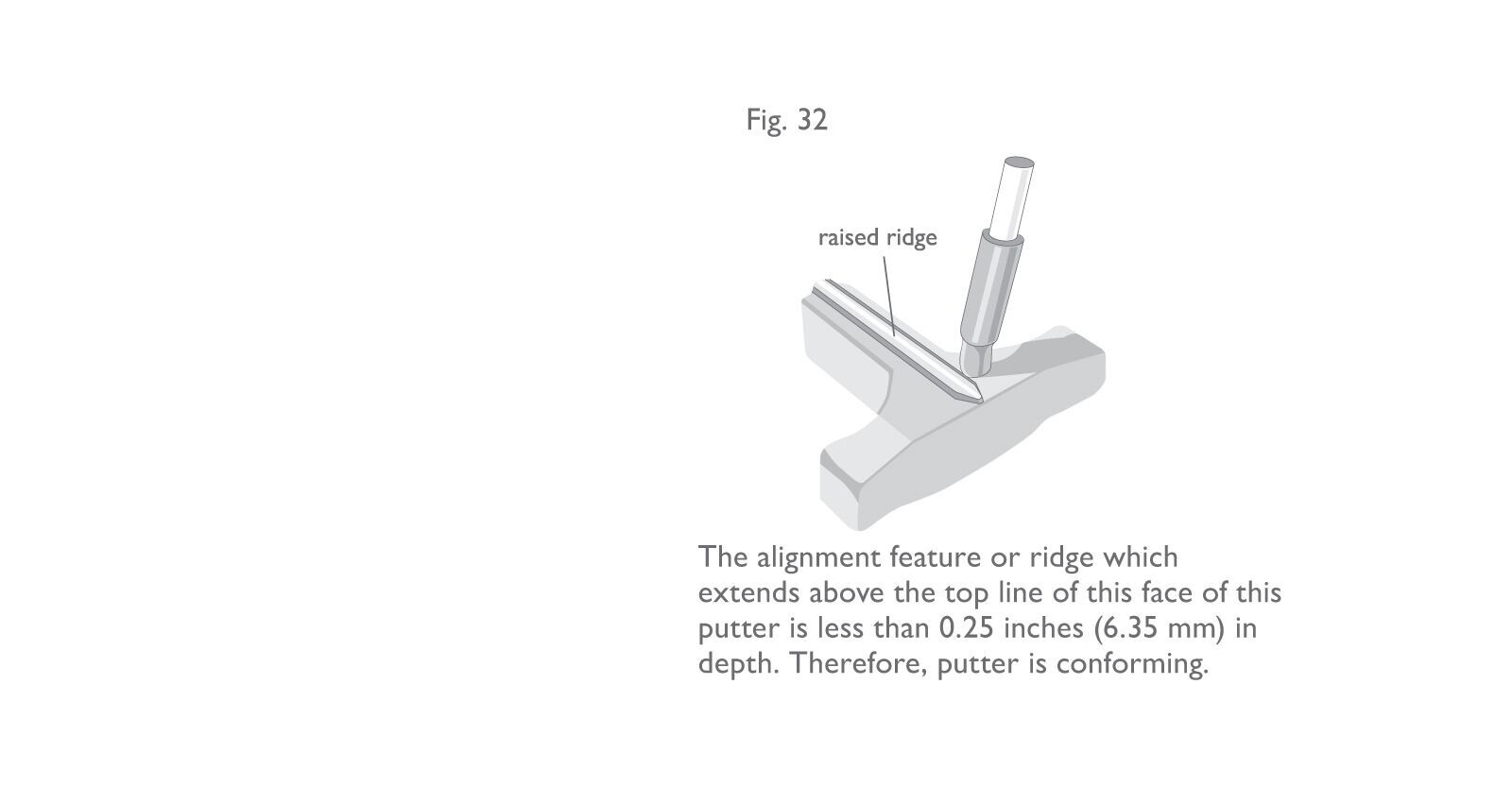
-
For woods and irons, features which otherwise meet the requirements for “plain in shape” must not extend above the top line of the head by more than 0.1 inch (2.54 mm).
-
Permanent or semi-permanent lines or other markings which have been painted, inscribed or otherwise incorporated (see Section 1a) for alignment purposes are permitted.
4.a(7) - Furrows and Runners
-
Furrows or runners which extend into the face of a wood or iron club from any part of the head are not permitted – see Figure 33.
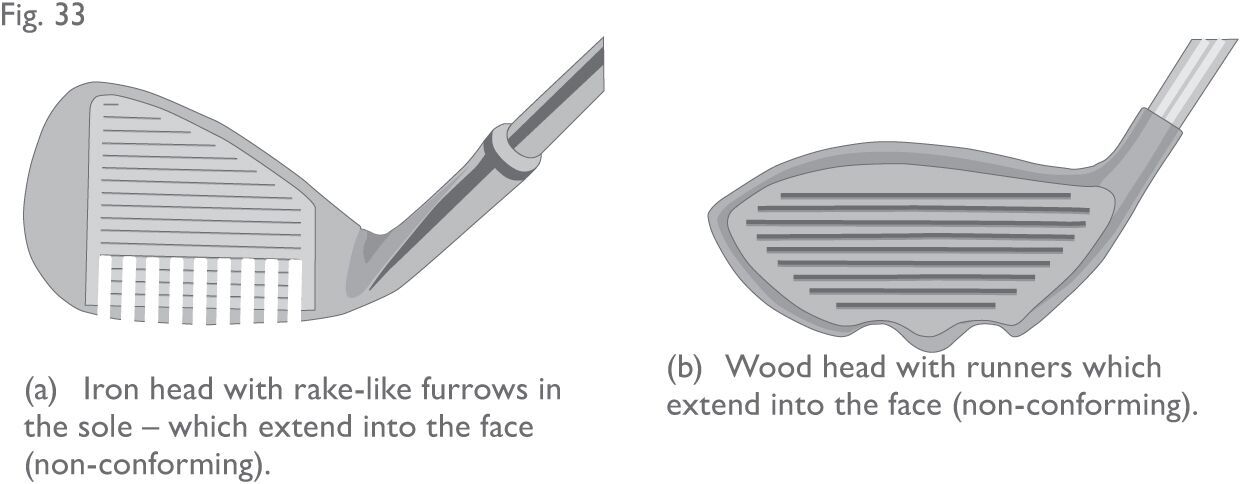
-
While this provision is applied strictly for furrows or runners which may appear on the sole of a putter, exceptions may be made for other parts of the head – see Figure 34.
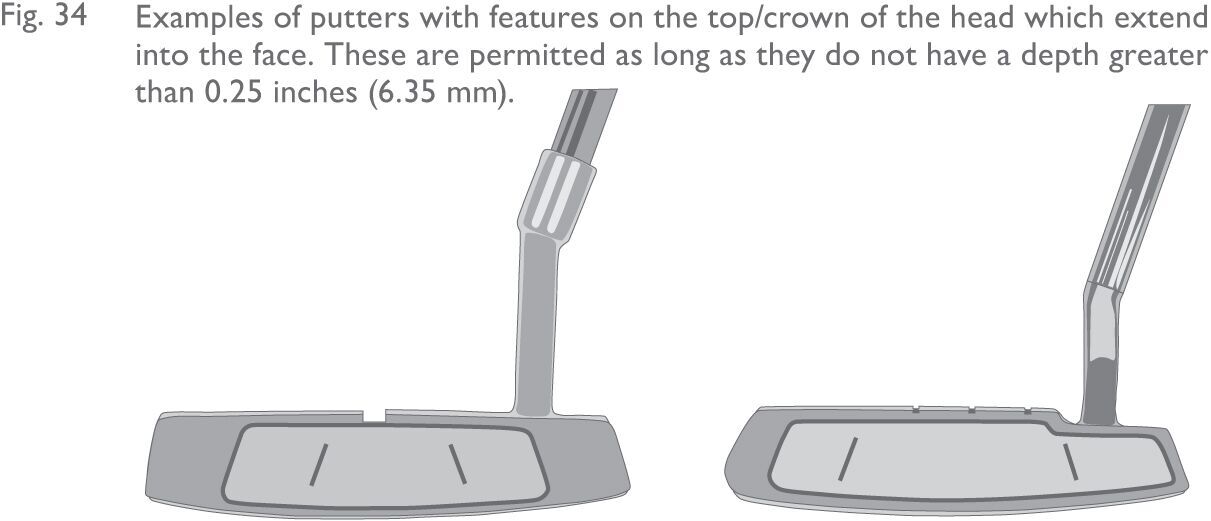
Furrows and/or runners are deemed to extend into the face if the leading edge of the face has any concavity (point of inflection or turning point).
The application of this provision is fairly straightforward in most cases and can be determined simply by placing a straight edge along the leading edge of the face and looking to see if there is a gap between these two edges. However, woods and hybrids commonly have a smooth transition between the face and the rest of the body which can sometimes make it difficult to determine, in a repeatable and reproducible manner, whether features “extend into” or intersect the face.
Where the transition between the body and the face is not clearly defined, i.e. the face does not meet the body at a sharp edge or chamfer, the point of intersection shall be defined as the point where a line inclined at 45° from the reference plane is tangent to the cross-section (see Figure 35).
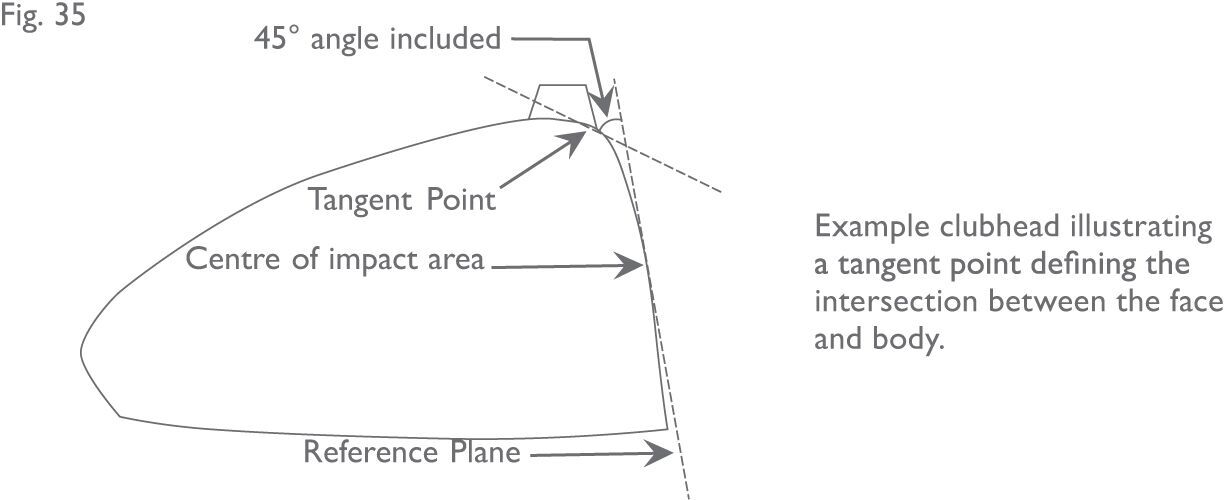
-
A reference plane is defined as the plane tangent to the face at the centre of the impact area.
-
A vertical cross-section is created by establishing a plane perpendicular to the reference plane, usually running through the centre of the face/clubhead and the area of interest (i.e. furrow or runner).
Projecting the points of intersection so defined onto the reference plane may be used to define a profile (see Figure 36).
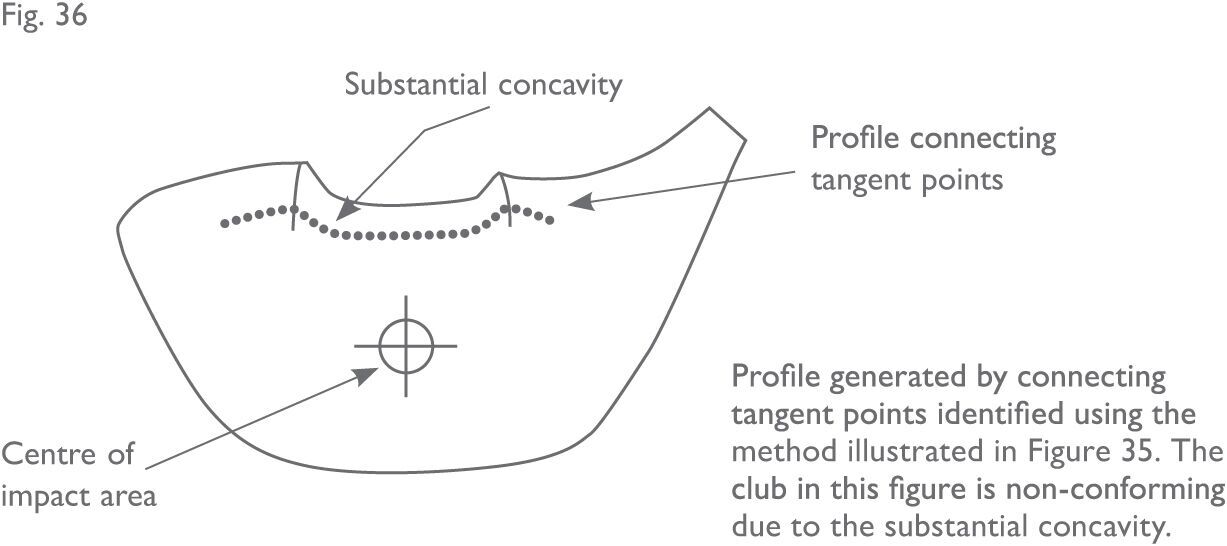
Any substantial concavities in said profile are considered sufficient evidence that a runner or furrow extends into the face and thus does not conform with Section 4a(i).
Where the transition between the body and face is clearly defined by a chamfer of at least 45° with respect to the face, furrows and/or runners are permitted to intersect the chamfered surface, provided the feature does not intersect the face itself (see Figure 37).
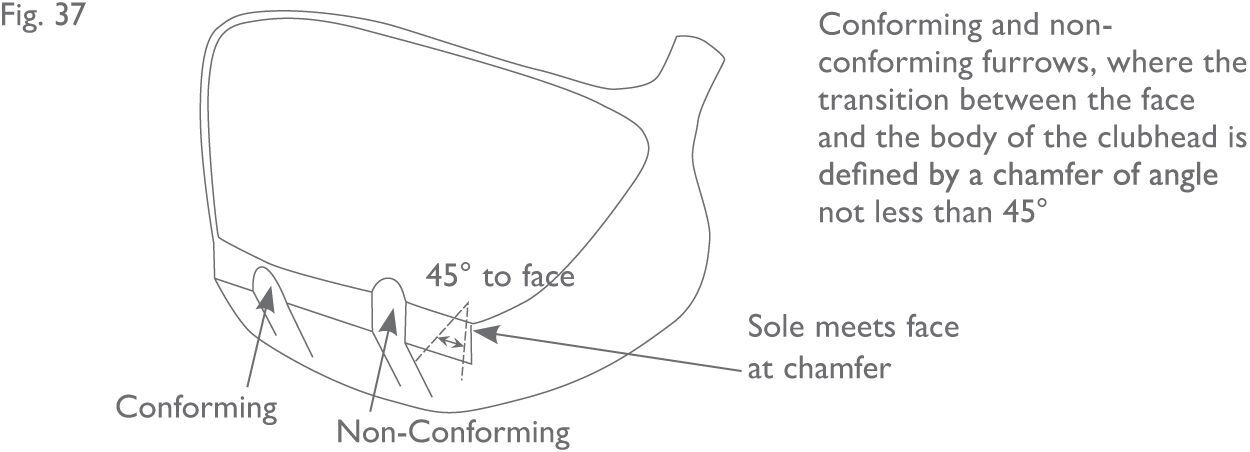
If a runner has been chamfered back away from the face, by at least 45°, then it would not be considered to extend into the face – see Figure 38.
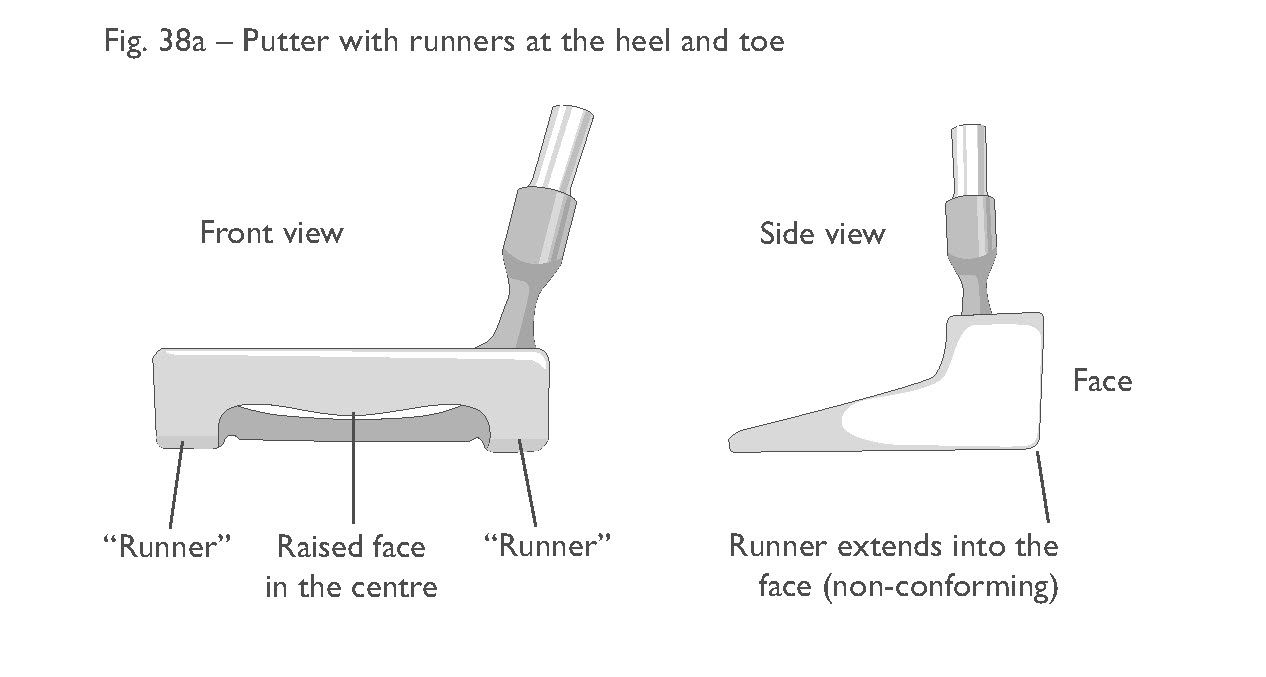
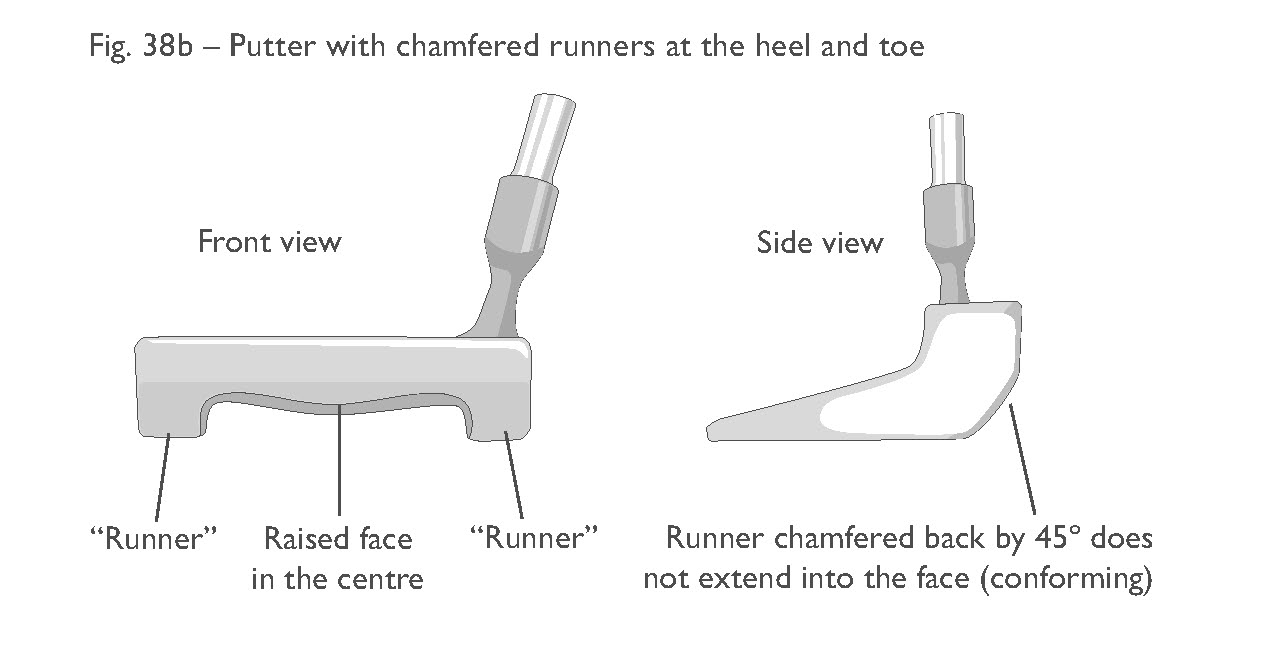
4.a(8) - Optical and Electrical Devices
Clubheads which incorporate prisms, mirrors, reflective materials, light beams, metronomes or mechanical devices such as spirit levels are not permitted – see Figures 39 and 40.
Electronic devices in or on the club shaft or grip, which have the sole purpose of identifying the club, may be permitted. The identification information is restricted to:
(a) the club’s owner, such as address and phone number;
(b) inventory tracking information;
(c) detection of the club’s use during a round.
Any such device must meet all other requirements of the Equipment Rules and must not vibrate or emit light or sound. If the device is capable of any function other than identification, the golf club will be considered not traditional and customary in form and make (see Section 1a (i)) and, therefore, non-conforming.
Note: Any device or application used in conjunction with a club incorporating such a device must comply with the provisions of Rule 4.3 of the Rules of Golf.
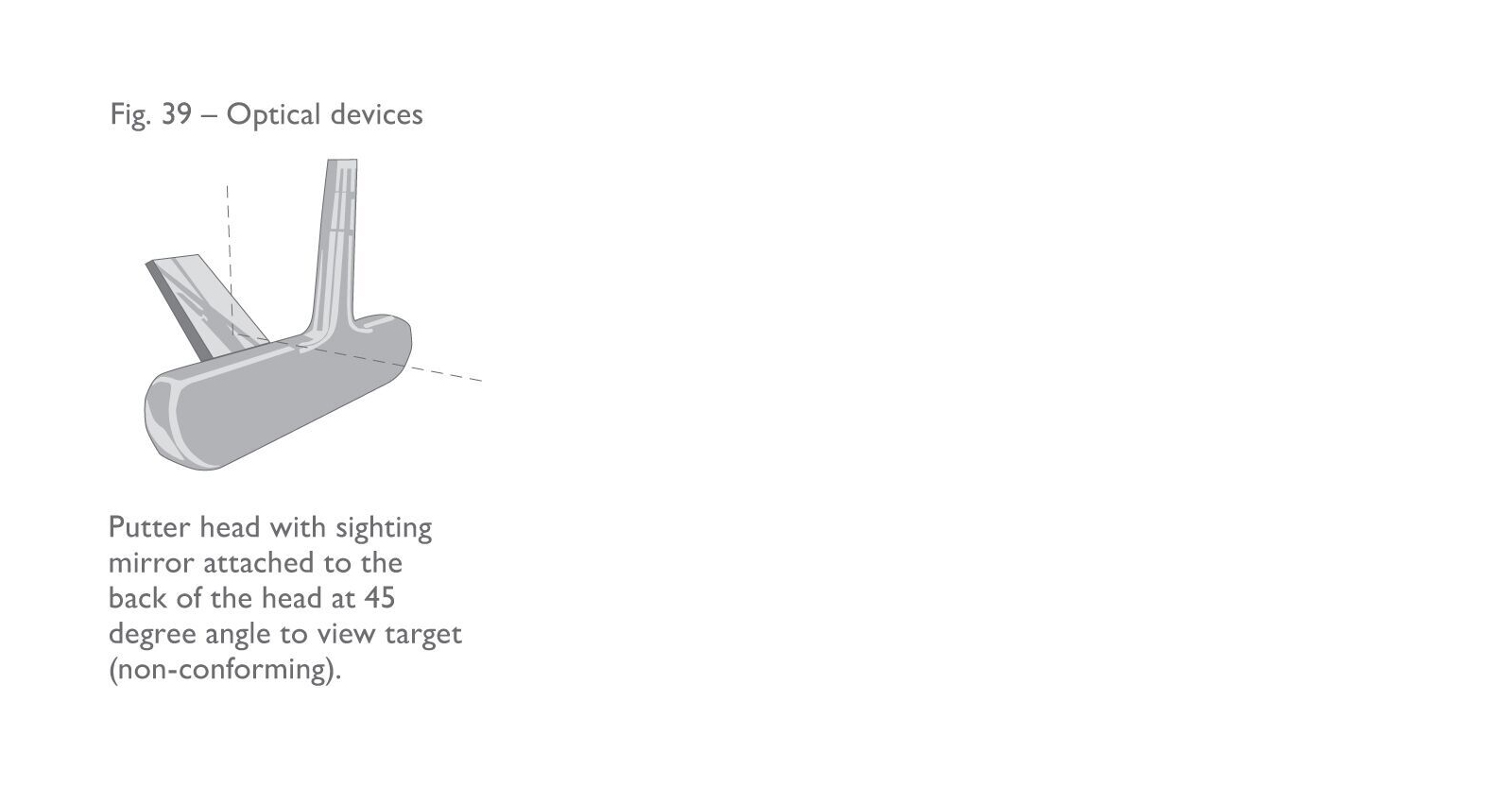
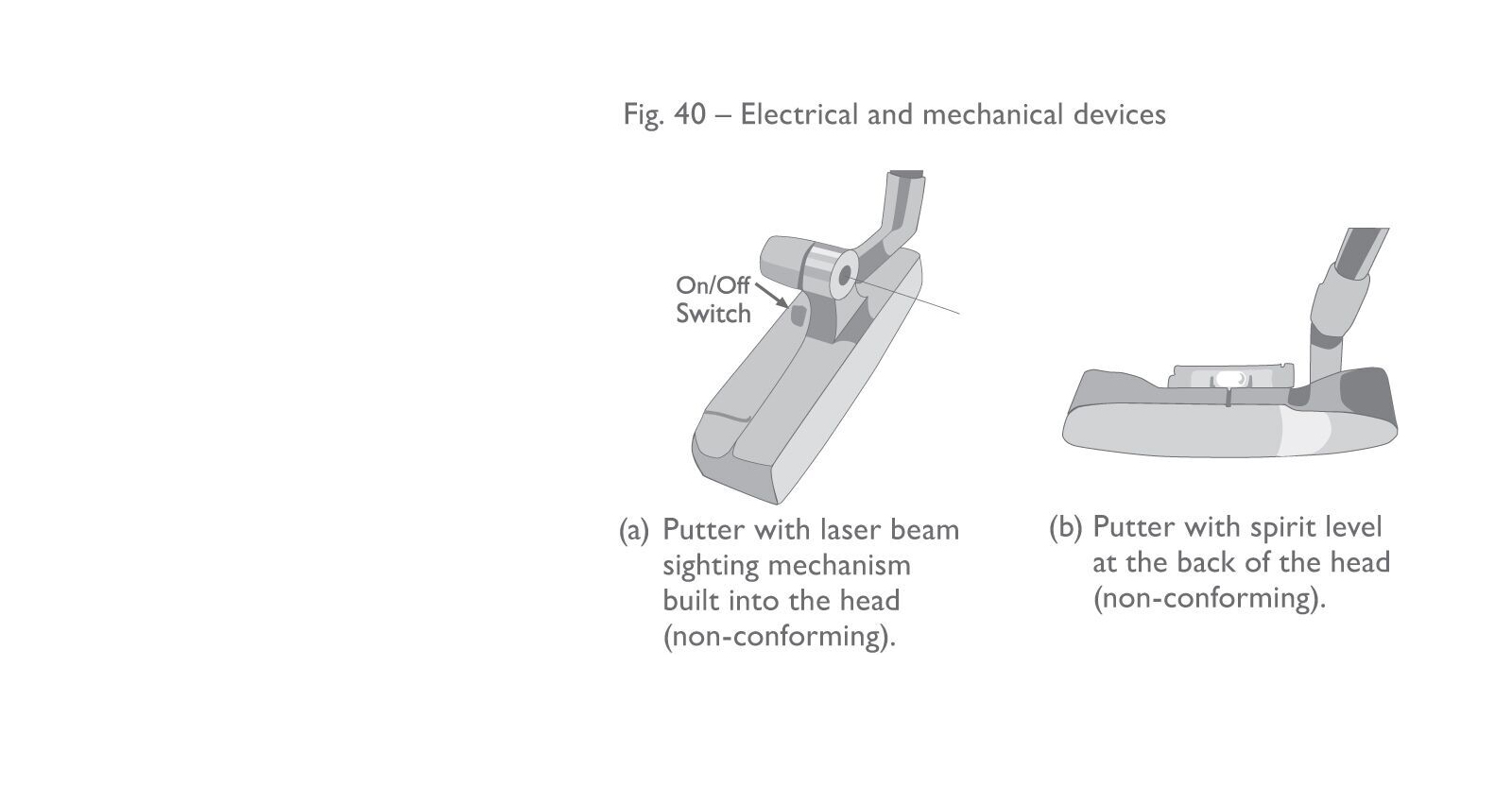
4.a(9) - Cavities in the Outline of the Heel and/or Toe
When making this assessment, “viewed from above” is interpreted to mean the range from directly above the head to the normal address position for that club. The restriction does not apply to horizontal cavities around the skirt of the head, which might be visible from above – see Figures 41a and b.
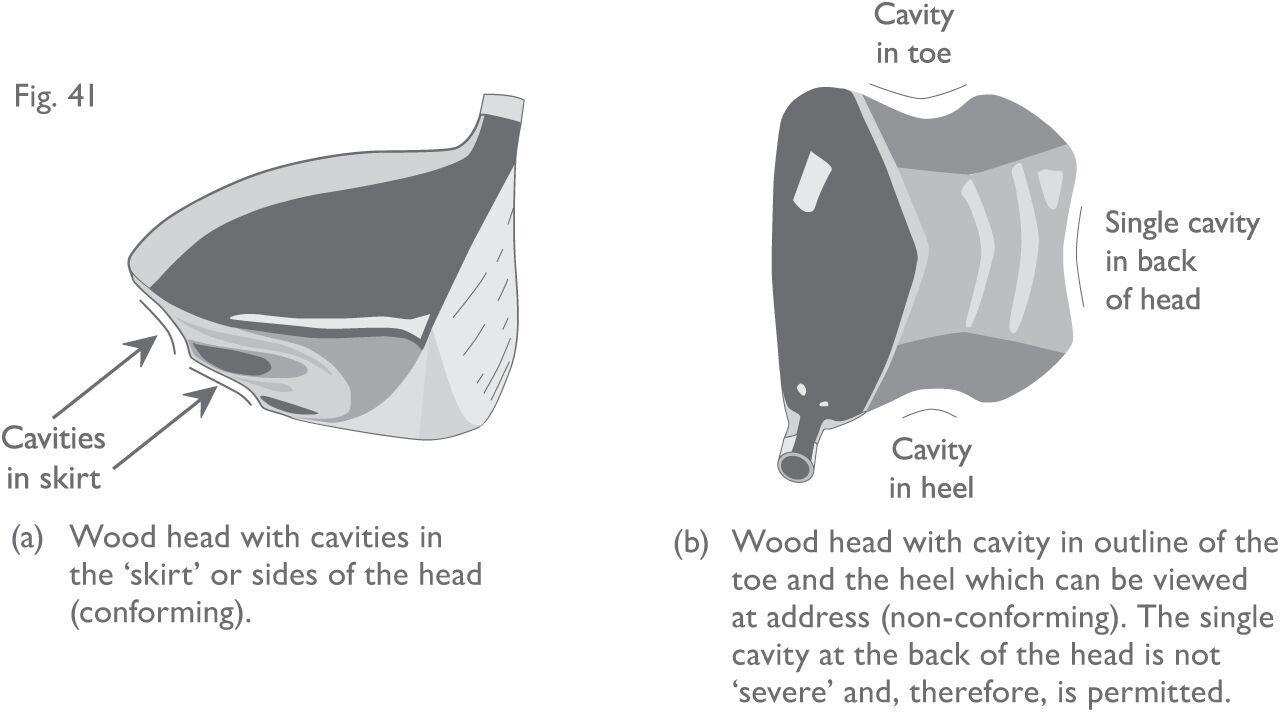
4.a(10) - Severe or Multiple Cavities in the Outline of the Back of the Head
-
Severe cavities (as viewed at address), which go all the way through the head, are not permitted. A “severe” cavity is one where the entrance to the cavity is narrower than its width at any other point – see Figure 41c.
-
A single cavity in the back of the head is permitted – see Figure 41b. However, multiple cavities are not permitted – see Figure 41d.
-
Cavities in the crown of the head are permitted, even if they are designed primarily as an aid to sighting, aiming or aligning the swing plane or the head position, or to accommodate markings for such aids – see Figure 41e. However, all cavities on the crown are filled for the purpose of measuring the volume of the head – see Section 4b(i)).
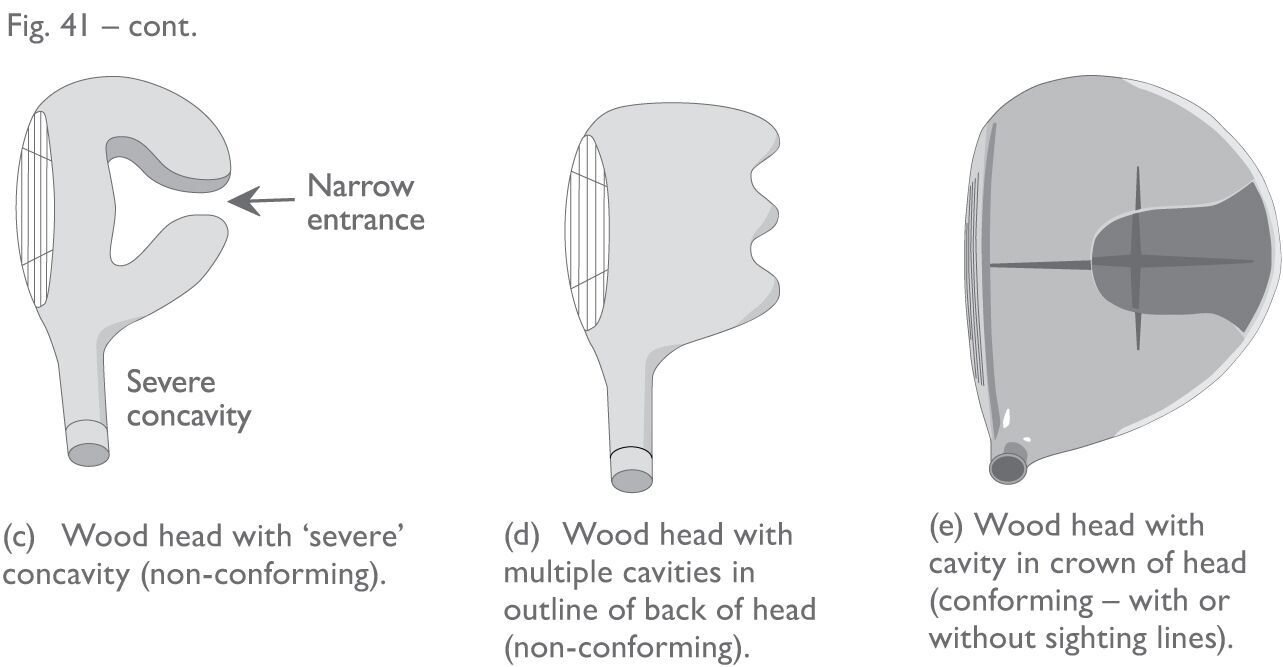
4.a(11) - Transparent Material
-
Clubheads made entirely of transparent material are permitted.
-
Transparent material that is added to an otherwise non-plain head does not render the head “plain in shape”. For example, a wood head which has a vertical hole from the top surface through to the sole would be ruled non-conforming (see Section 4a(i) and Figure 26). Filling this hole with a transparent material (e.g. perspex or glass), would not alter this ruling.
4.a(12) - Features Extending Beyond the Outline of the Head
Any fin, knob, appendage or plate which is protruding beyond the outline of the head is not permitted, whatever the purpose.
NOTE: While this provision does not apply to putters, The R&A and USGA have determined that unusual features which protrude beyond the outline of the toe and/or heel of a putter head may be ruled not “plain in shape” or not “traditional and customary”. However, as previously noted, other permanent appendages to the putter head are permitted provided that:
-
the feature is rigid throughout its length (i.e., cannot be bent or flexed by hand);
-
the feature does not extend forward of the face; and,
-
the feature does not extend above the top line of the face by more than 0.25 inches (6.35 mm).
